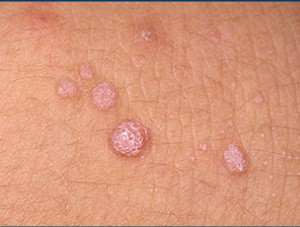Warts can grow anywhere on the face and body and can be embarrassing and frustrating to deal with. Most typically warts appear on the hands and tend to take on a cauliflower looking texture though other common types of warts have smooth, flat surfaces and appear on the face.
Plantar warts are those that are rough to the touch and a little bit spongy and may be yellowish, grey, or brown in color. Plantar warts are called such because they are typically found on the sole of the foot, the ball of the foot or on the heel and these warts make running or walking particularly painful.
Warts that show up around the toenails or fingernails and are quite rough in texture. These warts, or subungual warts can grow in size and number if not treated and can become more and more painful. These types of warts have been known to cause the nail to detach from the toenail or fingernail bed if they go untreated.
Some of the most contagious warts which are also among the most embarrassing are genital warts, also referred to as anal warts, rectal warts, penile warts or vaginal warts and can be spread through sexual contact. Genital warts tend to look like small growths and should be treated professionally to prevent spreading from occurring.
Warts Treatment
Treatment of warts varies depending on the size of the wart, the number of the warts needing treatment and the type of wart. Different wart treatments include surgical removal, cryotherapy, and medication either prescribed by a doctor or appropriate over the counter medications. Sometimes thorough, long-lasting treatment will depend upon the patient’s willingness to follow through with a doctor’s recommended course of action for treating the wart appropriately. The ultimate goal of wart treatment is to completely remove or destroy the wart without causing scar tissue.
The best course of action when trying to treat a wart is to visit your doctor, particularly if the wart is causing you pain or is especially embarrassing because of its visibility. Genital warts need to be addressed as soon as possible so don’t delay seeking professional, medical treatment. Your doctor will examine the wart or warts to determine their type, how contagious they are and the best method of treatment and how likely it is that your wart or warts may reoccur. Some warts are easily treated and others require ongoing effort.









